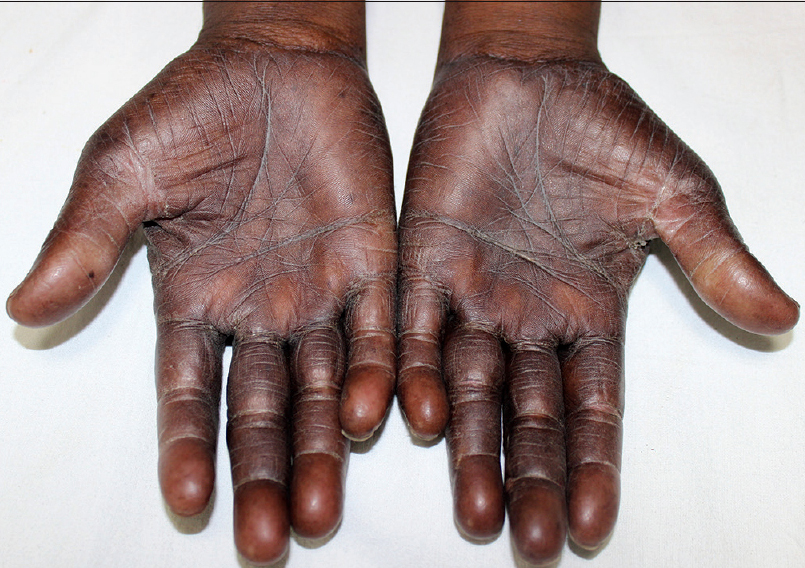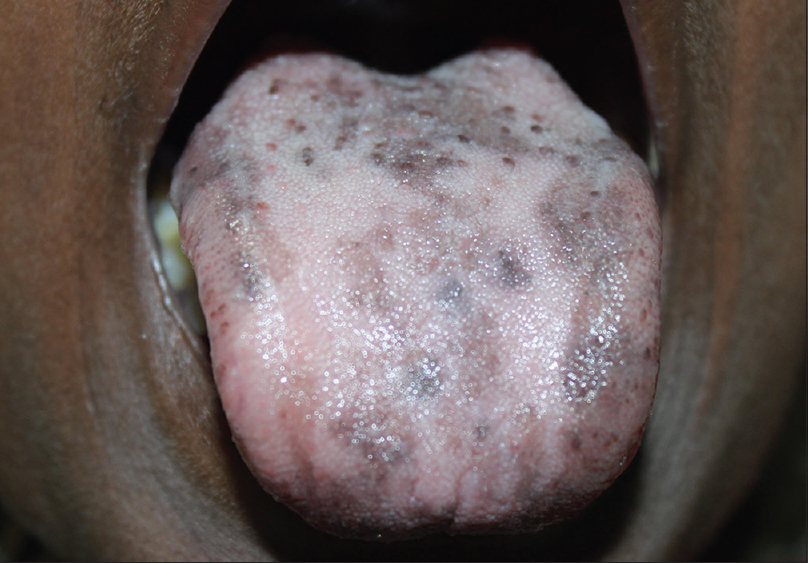Translate this page into:
Capecitabine-induced acral and mucosal hyperpigmentation
Correspondence Address:
Parul Verma
502 B, Halwasiya Lorepur Residency, New Hyderabad, Lucknow - 226 007, Uttar Pradesh
India
| How to cite this article: Verma P. Capecitabine-induced acral and mucosal hyperpigmentation. Indian J Dermatol Venereol Leprol 2017;83:583 |
A 41-year-old woman, previously operated for ovarian carcinoma and on capecitabine chemotherapy, presented with pigmentation of palms, soles and oral mucosa. Following the first cycle of chemotherapy, she developed hyperpigmentation on palms, soles and oral mucosa which resolved spontaneously (70%–80%) within 8–10 days of cycle completion. Similar complaints surfaced in the present (second) cycle of capecitabine chemotherapy. Diffuse hyperpigmentation and mild thickening of palms and soles, more pronounced at palmar creases [Figure 1a] with patchy pigmentation of tongue [Figure 1b], were seen. There was no associated tingling, numbness or preceding erythema. Naranjo score for adverse drug reaction probability was +9, providing a definite causality.
 |
| Figure 1a: Diffuse hyperpigmentation on palms with accentuation over the creases |
 |
| Figure 1b: Patchy hyperpigmentation on the dorsum of tongue |
Financial support and sponsorship
Nil.
Conflicts of interest
There are no conflicts of interest.
Fulltext Views
3,345
PDF downloads
1,525





